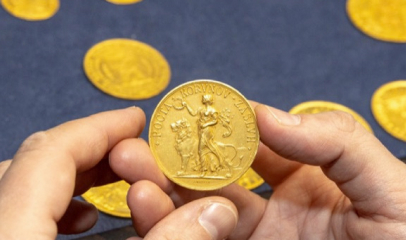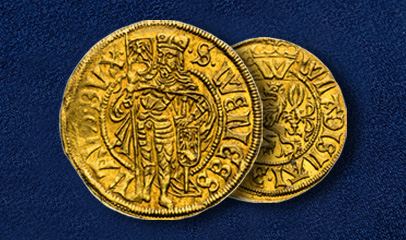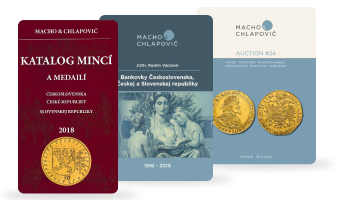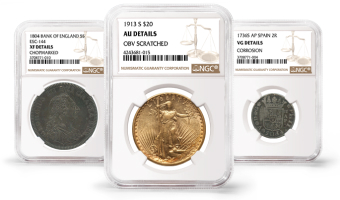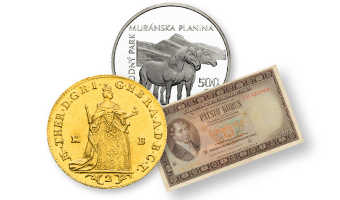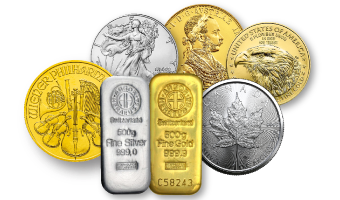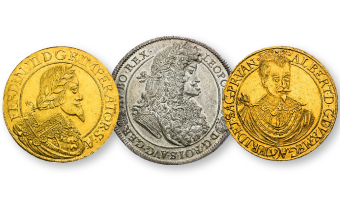
The most beautiful coins - guldiners
The emergence of new technologies and the discovery of rich silver deposits in Central Europe at the turn of the 15th and 16th centuries set the stage for the creation of heavy coins known as guldiners. First minted in Tyrol in 1486, and later in Kremnica between 1499 and 1506, guldiners are considered the predecessors of the thaler. These coins represent a unique hybrid between traditional coinage and medals, as they lacked a standardized weight, and although they were a tender, they primarily served for presentation. The guldiners were among the most beautiful coins in the world at the time. In addition to the rare silver strikes, there is also a number of extraordinarily rare gold strikes, minted in multiples of ducats, that occasionally appear on the numismatic market. One of two known specimens weighing six ducats and considered the finest of its kind features in our Auction #34 under lot number 76.
Obverse and reverse of guldiners
Guldiners were minted in Kremnica exclusively during the reign of Vladislaus II of Hungary. His mother was Elisabeth of Austria—the mother of four kings, daughter of Albert the Magnanimous, and sister to Ladislaus the Posthumous. The obverse of these guldiners bears the inscription WLADISLAI*D*G*REX*VNGARI, meaning 'Vladislaus, by the grace of God, King of Hungary'. In comparison with the 1499 to 1502 guldiners, the heraldic design on the obverse is notably different and very interesting, with the left side dedicated to the king and the right side to the queen. The left side of the crowned shield thus shows the Árpád stripes and the double cross, the Dalmatian leopard heads, the Bohemian lion, and, finally, the Polish eagle. Perhaps only the Lithuanian rider did not fit, since Vladislaus was from the Polish-Lithuanian Jagiellon dynasty. Vladislaus married Anne of Foix-Candale in 1502, with Anne being crowned Queen of Hungary in Székesfehérvár before their wedding that same year.
The right side of the shield thus reflects Anne's heritage, featuring the chains of Navarre, the vertical Foix pales, the Béarn cows, the fleurs-de-lis of Évreux, and the lions of Bigorre (Gascony). Anne was also related to the French royal dynasty. She passed away in 1506 while giving birth to their son, Louis Jagiellon, the heir to the throne. On the reverse of all the Kremnica guldiners, Saint Ladislas is depicted galloping on horseback, wielding a lance axe.
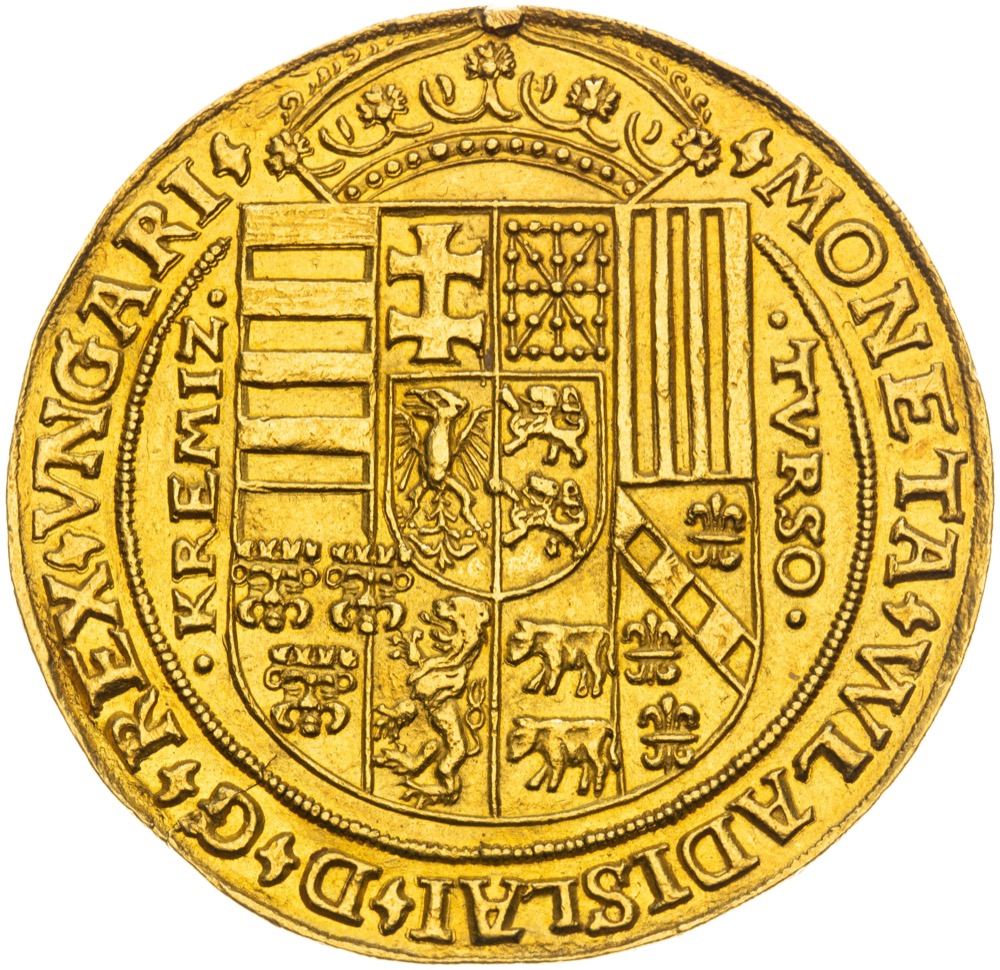
Hallmark K-H (Kremnitz-Hans Thurzo) and 'Turso'
The production of guldiners began under János Thurzó, who became the Chamber Count of the Kremnica Chamber in 1498. He rose to this position due to the favour of King Vladislaus II of Hungary, to whom he had lent significant support. As Chamber Count, Thurzó marked the gold and silver circulation coins leaving the Kremnica Mint with the hallmark K-H (Kremnitz-Hans Thurzo). However, on the guldiners, he chose to inscribe his full surname, 'Turso'. In addition to his role in Kremnica, Thurzó was a prominent figure in Kraków, where he served as a city council member, and in 1502, he was appointed governor of Zólyom county.
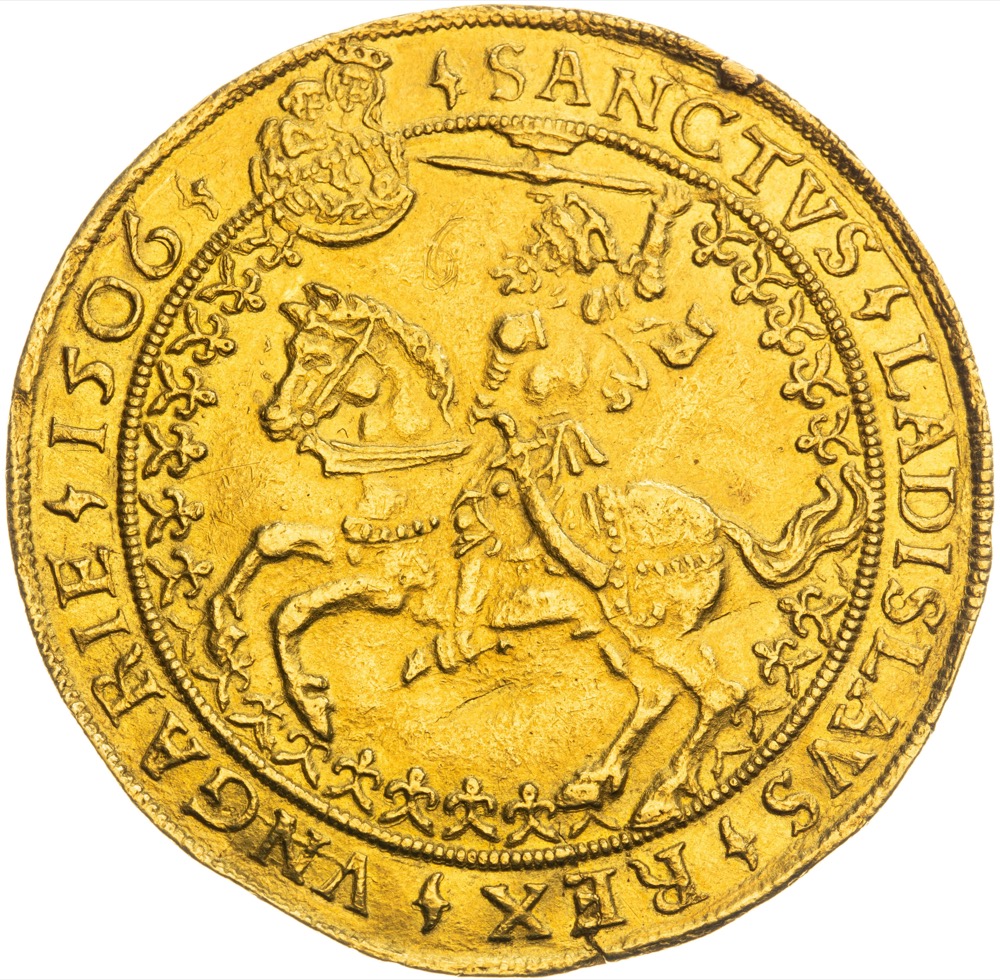
How did János Thurzó amass his wealth?
In 1465, Thurzó founded a smelter in Kraków, where he specialised in separating silver from copper imported from Banská Bystrica. Later, in 1494, he entered into a partnership with Jakob Fugger, a wealthy Augsburg merchant and banker, establishing the Thurzó-Fugger Company in Banská Bystrica. This company quickly grew into one of the largest trading enterprises in the world by around 1500 and maintained its status as the world's largest copper producer for two centuries. Recent research has revealed that the copper produced by Thurzó's company was used to plate the ships of Christopher Columbus—Santa Maria, Pinta, and Niña—thus linking Banská Bystrica and Thurzó's mining and trading activities to the discovery of America.
Thurzó's companion, Jakob Fugger, wielded such immense influence that, beyond financing the emperor, he is rumoured to have persuaded the pope to remove interest from the list of sins, easing the moral burden on his enterprising spirit. Ironically, his proposal to sell indulgences to absolve sinners became the very spark that ignited Martin Luther's Reformation. Fugger helped the rise of the Catholic Habsburgs across Europe, while his idea at the same time provoked the emergence of Protestantism. Widely regarded as the richest man in history, Fugger's wealth remains unmatched, even by the greatest bankers, industrialists, and tech moguls of today.
NUMISMATIC AUCTION #34
The floor auction will take place on Friday, 25 October 2024, at the Mandarin Oriental Hotel in Prague. The eLive auction will take place from Monday, 28 October 2024 (starting at 06:00 pm), to Thursday, 31 October 2024 (starting at 06:00 pm).

BIDDING METHODS:
The floor auction: in person on the floor, by phone, live bidding via the AUEX auction system, prebiddig via the AUEX auction system
The eLive auction: live bidding via the AUEX auction system, prebiddig via the AUEX auction system
THE AUEX AUCTION SYSTEM:
https://machochlapovic.auex.de/en-us/auctions/current


